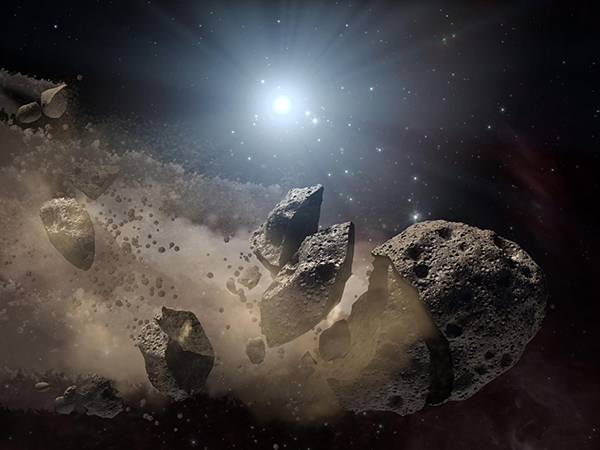NASA Launches Asteroid Capture Project as Prelude to Mars Mission
| Vittorio Hernandez | | Nov 02, 2014 05:50 AM EST |
(Photo : Wikipedia) The U.S. Congress just approved a space mining bill that will allow asteroid mining.
After 18 months of research, NASA has launched Project Asteroid Redirect Mission (ARM) in preparation for its manned missions to Mars in the 2030s.
The project involves bringing an asteroid into a lunar orbit. The asteroid will serve as a training ground for NASA.
Like Us on Facebook
NASA intends to snare an asteroid by using a giant claw or net then bring the asteroid closer to Earth. ARM has the approval of U.S. President Barack Obama.
NASA has two concepts for how it plans to capture the asteroid. One is to use an inflatable system like a bag and the second is to use a robotic arm to capture a boulder on an asteroid. NASA will choose which of these two concepts it wants later this year.
A spacecraft will then redirect the captured asteroid to the Distant Retograde Orbit, a stable orbit around the moon. By the mid-2020s, astronauts aboard the Orion spacecraft will explore the captive asteroid.
Massachusetts Institute of Technology Professor Richard Binzel, however, doubts NASA's approach, insisting it would be better to use the asteroids as stepping stones. That will initially involve conducting a survey of asteroids between Mars and Earth.
"Near-Earth asteroids are the most accessible interplanetary stepping stone to Mars," Binzel told National Post. "Once humans can reach one asteroid in its native orbit, the gateway is opened such that hundreds, if not thousands more will be accessible."
The professor believes NASA is wasting funds, time and energy with its ARM program. He said it doesn't make sense to send humans to Mars by capturing an asteroid and sending it on an orbit.
Binzel, who teaches planetary science and aeronautics at MIT, said there is no need to create a specialized landing craft since all the scientists need do is to sidle up and fly beside an asteroid.
He predicts the first missions may just take weeks and won't go very far. Future missions, however, could go on for months and successfully enter interplanetary space.
"Why retrieve as asteroid when we can wait for one to come near us," Binzel asked.
MIT also shot down a planned private Mars One mission that targets its first landing in 2025. The MIT study warned that due to lack of infrastructure on Mars built by the Dutch company planning the Mars journey, the first crew members on this mission will likely die within 68 days.
©2015 Chinatopix All rights reserved. Do not reproduce without permission
EDITOR'S PICKS
-

Did the Trump administration just announce plans for a trade war with ‘hostile’ China and Russia?
-

US Senate passes Taiwan travel bill slammed by China
-

As Yan Sihong’s family grieves, here are other Chinese students who went missing abroad. Some have never been found
-

Beijing blasts Western critics who ‘smear China’ with the term sharp power
-

China Envoy Seeks to Defuse Tensions With U.S. as a Trade War Brews
-

Singapore's Deputy PM Provides Bitcoin Vote of Confidence Amid China's Blanket Bans
-

China warns investors over risks in overseas virtual currency trading
-

Chinese government most trustworthy: survey
-

Kashima Antlers On Course For Back-To-Back Titles
MOST POPULAR
LATEST NEWS
Zhou Yongkang: China's Former Security Chief Sentenced to Life in Prison

China's former Chief of the Ministry of Public Security, Zhou Yongkang, has been given a life sentence after he was found guilty of abusing his office, bribery and deliberately ... Full Article
TRENDING STORY

China Pork Prices Expected to Stabilize As The Supplies Recover

Elephone P9000 Smartphone is now on Sale on Amazon India

There's a Big Chance Cliffhangers Won't Still Be Resolved When Grey's Anatomy Season 13 Returns

Supreme Court Ruled on Samsung vs Apple Dispute for Patent Infringement

Microsoft Surface Pro 5 Rumors and Release Date: What is the Latest?










